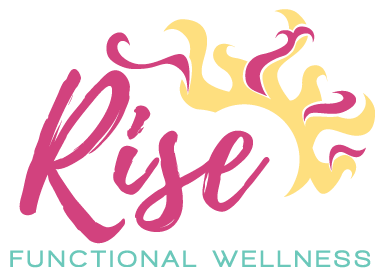“Self-regulation is control [of oneself] by oneself.” – Andrea Bell
“Regulation” in human beings is a fancy way of describing the way the nervous system handles stress, emotions and more generally, the way it manages energy. When our autonomic nervous system (ANS) is regulated it means there is balance between our sympathetic nervous system, the one that is responsible for fight or flight, and our parasympathetic nervous system, the one responsible for calming us down. Therefore, when we our ANS is dysregulated, our stress response is typically overactivated and our ability to self-calm is under-activated. If we go back to the idea of energy, we can also say that there is a lot of stuck energy in our body.
Studies show that a deep sigh brings the autonomic nervous system from an over-activated sympathetic state to a balanced parasympathetic state.
Why is regulation of the nervous system important? When the stress response is triggered, it floods our system with hormones and neurochemicals. This can significantly impact our overall health and wellbeing. Stress is also linked to the six leading causes of death including cancer, coronary artery disease, accidental injuries, respiratory disorders, liver disease and suicide.
There are many reasons our nervous system may become dysregulated but a significant trigger is when we feel a loss of control. Most of us had an overwhelming sense of uncertainty and lack of control this past year and a half with COVID. Therefore, all of us can benefit from some techniques to regulate our nervous system in order to learn self-soothing strategies and reclaim a sense of control.
One way we can facilitate self-calming activity and our parasympathetic nervous system is by stimulating the vagus nerve (the longest nerve in the body that connects our brain to many of our vital organs).
Here are 6 tips to stimulate the vagus nerve and promote self-calming:
- Cold Exposure- cold showers; applying ice packs to the face or submerging your face in ice cold water.
- Deep and Slow Breathing- practice belly breathing and slow your inhale and exhale.
- Singing, Humming, Chanting- the vagus nerve can be stimulated by the vocal cords and muscles connected at the back of the throat.
- Meditation- research has found that meditation reduces the fight or flight response.
- Exercise- mild to moderate exercise stimulates the vagus nerve and has been found to be beneficial for both brain and mental health.
- Laughter- laughter has been shown to increase vagus nerve stimulation, heart-rate variability (HRV), and improve mood.
When we stimulate the vagus nerve, we signal our body to relax and de-stress, in turn improving mood, well-being and resilience. When we exercise or move, when we practice breathwork or singing or laughing, we are allowing the energy to move through us. These practices can help improve the flow of the energy in order to avoid that stuck state.
What is your favorite strategy to self-calm? Let me know, I always love learning from my audience.

